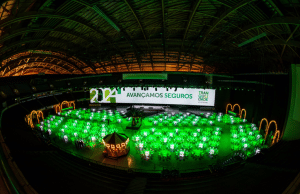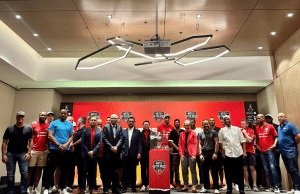The meetings industry, and especially the huge market of association meetings, is experiencing a permanent transformation. Observing, analysing and making the right decisions on the current changes will be the challenges for a successful future.
Association meetings have had quite a stable structure for many years, but today there are ongoing discussions and adaptations, if not real changes, in the world of associations. Some of these changes, that could also prove to be opportunities, include the following:
Volunteer leadership in associations, quite often briefed by professional staff, need to understand that scientific meetings are no longer l’art pour l’art, but are very intense educational platforms – delegates look for excellent education and networking opportunities, not to forget a well-planned and smoothly delivered programme. Today more than ever, associations need to ‘fight’ for every delegate, to convince him or her that the meeting product delivered is the best in the field and that it is a ‘must attend’. Optimum service and the best content will ensure that the delegate returns, as in the end it is the delegate who foots the bill for the event through the registration fee.
Associations, especially European associations, can create a globally recognised communication and education platform, attracting not only the European delegate, but increasingly overseas delegates too – the key elements of this attraction continue to be quality of content and quality of organisation.
Associations, however, have also to keep in mind that we are moving towards a multi-generation event era – on one side they have to cater for the technologically-aware younger generations, using the technical tools available on the market and reflected in the meeting organisation – more flexible setups, more high-end technology in the meeting room and foyer areas, more interactivity, all of which the younger generation expects from meetings today. At the same time and on the other side, however, we need to address that we will all be working longer into our lives, meaning that we will also see quite a significant number of ‘older’ delegates attending, having different physical needs at a meeting, special meeting chairs, for example. This creates an impetus for venues and hotels to be ready to adapt. The challenge for the association is to balance both sides and cooperate with venues to deliver a product that can easily, conveniently and seamlessly be utilised by all delegates.
A special focus is required for the world of medical meetings. The above mentioned development will be reflected in a different behavioural response of the pharmaceutical industry. We have already seen a change in the participation and sponsorship of medical meetings by the pharmaceutical industry over the last few years. Compliance issues, ethical codes etc. – we hear about this every day – yet on the other hand no other sector can deliver such a compact continuing education such as medical meetings. We will see fewer delegates sponsored by the industry, which in my view does not mean that the pharmaceutical industry will pull out of medical meetings – rather, content will again more than ever be king. And the ‘touristic destination’ appeal will become of less importance. Already today, medical meetings need to focus on the content delivered and not on the destination of the meeting: as we carefully follow the discussions and the developments on various levels, we will better understand how these issues will develop.
Recent research among delegates underlines that the priorities are the scientific programmes and content and that any time to consume the ‘touristic’ aspect of a destination is diminishing (this is particularly the case for European meetings and at the moment less valid for international ones).
Finally we are faced with a new trend in the meetings industry: ‘Meeting Architecture’, a new way of thinking and organising scientific exchange. A wide range of research, outside of the meetings industry, will be imported into the world of meetings. The traditional theatre setup of meeting rooms will be increasingly replaced with alternative settings, tailor-made for the nature of the meeting (which definitely has an impact on space in venues). Lighting of rooms and foyer areas need to be more flexible, even during a single meeting day, and the power of music will be used more than in the past throughout the different areas of a venue. And finally, it will be also necessary to reconsider how a venue will be set up for the free networking time. Coffee breaks might look different, lounge areas will become more intricate. And let’s not forget how technology can already be used in advance of the meeting to link delegates who might not know each other, but have the same field of interest.
The scenario is fascinating: a lot of change lies on the horizon. Some of these will happen soon, some will happen later, some might not happen at all, but we need to watch, follow and discuss them with our clients and our suppliers.
There is one absolute positive element in this whole change scenario: change reflects life. A life not changing is dead. The meetings industry is more alive than ever and nobody questions any longer that there is nothing better than when people get together, meet physically and hold discussions. The outlook is positive – grab hold of the change and be a part of it!
Christian Mutschlechner













